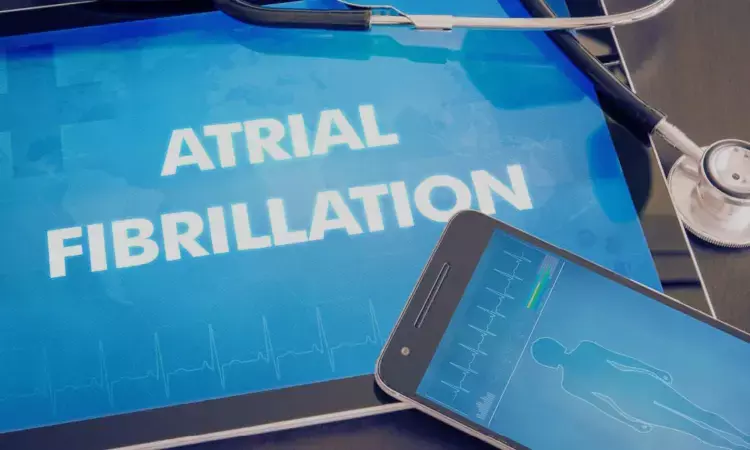- Home
- Medical news & Guidelines
- Anesthesiology
- Cardiology and CTVS
- Critical Care
- Dentistry
- Dermatology
- Diabetes and Endocrinology
- ENT
- Gastroenterology
- Medicine
- Nephrology
- Neurology
- Obstretics-Gynaecology
- Oncology
- Ophthalmology
- Orthopaedics
- Pediatrics-Neonatology
- Psychiatry
- Pulmonology
- Radiology
- Surgery
- Urology
- Laboratory Medicine
- Diet
- Nursing
- Paramedical
- Physiotherapy
- Health news
- Fact Check
- Bone Health Fact Check
- Brain Health Fact Check
- Cancer Related Fact Check
- Child Care Fact Check
- Dental and oral health fact check
- Diabetes and metabolic health fact check
- Diet and Nutrition Fact Check
- Eye and ENT Care Fact Check
- Fitness fact check
- Gut health fact check
- Heart health fact check
- Kidney health fact check
- Medical education fact check
- Men's health fact check
- Respiratory fact check
- Skin and hair care fact check
- Vaccine and Immunization fact check
- Women's health fact check
- AYUSH
- State News
- Andaman and Nicobar Islands
- Andhra Pradesh
- Arunachal Pradesh
- Assam
- Bihar
- Chandigarh
- Chattisgarh
- Dadra and Nagar Haveli
- Daman and Diu
- Delhi
- Goa
- Gujarat
- Haryana
- Himachal Pradesh
- Jammu & Kashmir
- Jharkhand
- Karnataka
- Kerala
- Ladakh
- Lakshadweep
- Madhya Pradesh
- Maharashtra
- Manipur
- Meghalaya
- Mizoram
- Nagaland
- Odisha
- Puducherry
- Punjab
- Rajasthan
- Sikkim
- Tamil Nadu
- Telangana
- Tripura
- Uttar Pradesh
- Uttrakhand
- West Bengal
- Medical Education
- Industry
Dual Defibrillator Pad Effective in Treating Atrial Fibrillation in Obese Patients: JAMA

A recent clinical trial revealed that using two sets of defibrillator pads simultaneously is more effective than the traditional single set in restoring normal heart rhythm in obese patients with atrial fibrillation. The study was conducted across three centers in Louisiana and the outcomes were published in the recent issue of Journal of American Medical Association.
The study from August 2020 to 2023 was carried forward by the team of Joshua Aymond to address the increasing prevalence of atrial fibrillation and obesity. Both conditions are rising throughout the globe and obesity has been linked to reduced success in cardioversion using standard methods.
The trial included 200 patients who met the stringent eligibility criteria, which was a body mass index (BMI) of 35 or higher, age 18 or older and a planned nonemergent electrical cardioversion for atrial fibrillation. These participants were randomly assigned to receive either the dual direct-current cardioversion (DCCV) or the traditional single DCCV, ensuring a balanced comparison between the two methods.
The results found that the dual DCCV method, which involves two sets of defibrillator pads delivering a combined energy of 400 joules, demonstrated a significantly higher success rate in converting patients back to a normal sinus rhythm on the first attempt. Also, 98% of patients in the dual DCCV group achieved successful cardioversion when compared to 86% in the single DCCV group.
The study highlighted that even patients in the single DCCV cohort who initially failed to revert to sinus rhythm could be successfully treated with subsequent dual DCCV attempts. This sequential approach showed that 12 out of 14 patients were successfully converted on the second attempt with the remaining two achieving success on the third attempt.
The research found no significant differences in adverse cardiovascular events between the two groups and both the groups reported minimal chest discomfort post-procedure. The median discomfort rating was zero out of ten for both methods which indicates the dual DCCV technique does not increase patient discomfort despite the higher energy delivery. This study provides robust evidence that dual DCCV is a superior method for cardioversion in obese patients by offering higher success rates without compromising safety.
Source:
Aymond, J. D., Sanchez, A. M., Castine, M. R., Bernard, M. L., Khatib, S., Hiltbold, A. E., Polin, G. M., Rogers, P. A., Dominic, P. S., Velasco-Gonzalez, C., & Morin, D. P. (2024). Dual vs Single Cardioversion of Atrial Fibrillation in Patients With Obesity. In JAMA Cardiology. American Medical Association (AMA). https://doi.org/10.1001/jamacardio.2024.1091
Neuroscience Masters graduate
Jacinthlyn Sylvia, a Neuroscience Master's graduate from Chennai has worked extensively in deciphering the neurobiology of cognition and motor control in aging. She also has spread-out exposure to Neurosurgery from her Bachelor’s. She is currently involved in active Neuro-Oncology research. She is an upcoming neuroscientist with a fiery passion for writing. Her news cover at Medical Dialogues feature recent discoveries and updates from the healthcare and biomedical research fields. She can be reached at editorial@medicaldialogues.in
Dr Kamal Kant Kohli-MBBS, DTCD- a chest specialist with more than 30 years of practice and a flair for writing clinical articles, Dr Kamal Kant Kohli joined Medical Dialogues as a Chief Editor of Medical News. Besides writing articles, as an editor, he proofreads and verifies all the medical content published on Medical Dialogues including those coming from journals, studies,medical conferences,guidelines etc. Email: drkohli@medicaldialogues.in. Contact no. 011-43720751


